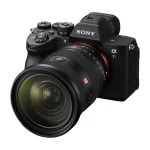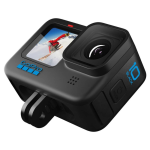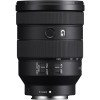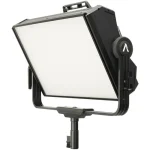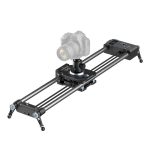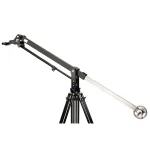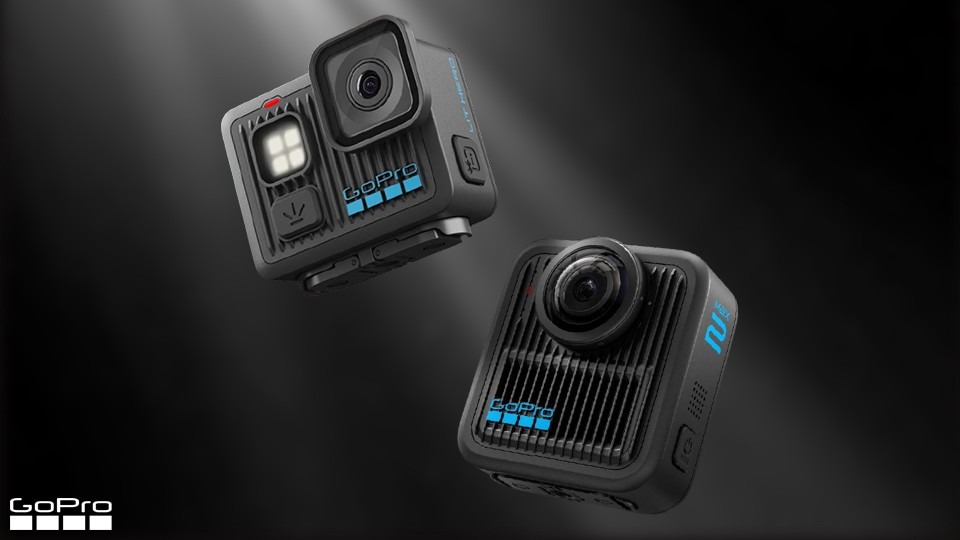How to make a video with the best mirrorless camera? Leave a comment

How to make a video with the best mirrorless camera?
To make a video with the best mirrorless camera, start by choosing a model with high resolution, a large sensor, and 4K video capabilities. Set the resolution and frame rate for optimal video quality, adjusting settings like shutter speed to match the frame rate. Select the right lens, with a wide aperture for cinematic depth of field or a zoom lens for versatility. Use an external microphone for better audio quality, and ensure proper lighting to enhance the visuals. Focus manually for precision and stabilize the camera with a tripod or gimbal. Finally, edit and color grade your footage in post-production.
Choosing the Right Mirrorless Camera for Video
When making a video with a mirrorless camera, the first step is selecting the best model for your needs. Mirrorless cameras offer excellent video quality, compact size, and advanced features. Look for a camera with high resolution, a large sensor for better low-light performance, and the ability to shoot in various frame rates. Opt for models that support 4K video recording or higher for crisp, professional footage. Popular choices include Sony, Canon, Panasonic, and FujiFilm mirrorless cameras, known for their outstanding video capabilities.

Setting Up the Camera for Video Recording
Once you’ve selected the right camera, it’s time to configure it for optimal video recording. Set the resolution to the highest setting available, which is typically 4K or 1080p depending on your camera’s specifications. Adjust the frame rate based on your desired look—24fps for cinematic shots, 30fps for standard video, or higher frame rates for smooth slow-motion footage. Don’t forget to set the appropriate shutter speed, typically double the frame rate (e.g., 1/50 for 24fps).
Choosing the Right Lens for Video
The lens you choose will significantly impact the quality and style of your video. For a cinematic look, consider using a prime lens with a wide aperture (f/1.8 or f/2.8). A wide aperture allows for a shallow depth of field, making your subject stand out against a blurred background. For more versatility, a zoom lens gives you the ability to frame your shots quickly without needing to change lenses. The focal length of your lens will affect your composition, so choose one that fits your shooting style and environment.
Best Mirrorless Camera for Photography in Pakistan
When selecting a mirrorless camera in Pakistan, there are several factors to keep in mind to ensure you get the best possible performance, features, and value for your money. Mirrorless cameras have become increasingly popular due to their compact size, high-quality imaging, and versatility, especially for both photography and videography. In Pakistan, you’ll find a range of mirrorless cameras from leading brands like Sony, Canon, Panasonic, and Fujifilm, each offering unique features tailored to different needs.
If you’re looking for the best mirrorless cameras for photography in Pakistan, Foto Crown is an excellent place to explore a range of high-quality options. Mirrorless cameras are favored for their compact design, faster autofocus, and superior image quality compared to traditional DSLRs. With options from leading brands like Sony, Canon, Panasonic, and Fujifilm, Foto Crown provides a variety of models suited to both professional photographers and enthusiasts.
1. Sony Alpha a7 III
The Sony Alpha a7 III is widely regarded as one of the best mirrorless cameras for both professional photographers and videographers. It offers a full-frame sensor, 4K video recording, and exceptional autofocus performance, making it a great choice for a variety of shooting scenarios. With its long battery life and superb image quality, the a7 III is ideal for both stills and video work.
2. Canon EOS R6 Mark II
Canon’s EOS R6 Mark II is another top contender, known for its fast autofocus, impressive low-light performance, and 4K video capabilities. It’s equipped with a 20-megapixel full-frame sensor and in-body image stabilization, which helps reduce camera shake, especially when shooting handheld. The EOS R6 is an excellent option for those looking for versatility in both photography and videography.
3. Fujifilm X-T5
The Fujifilm X-T5 is a high-performance mirrorless camera that combines a retro design with advanced features, perfect for both photographers and videographers. Equipped with a 40.2-megapixel APS-C sensor, it delivers exceptional image quality with rich detail and vibrant colors. The X-T5 offers 4K video recording, in-body image stabilization, and a fast autofocus system, making it ideal for capturing sharp, dynamic footage. With its compact build, tilting touchscreen, and classic dials, the X-T5 offers a blend of modern technology and traditional controls, appealing to both creative professionals and enthusiasts.
4. Canon EOS R3
The Canon EOS R3 is a flagship mirrorless camera designed for professional photographers and videographers. Featuring a 24.1-megapixel full-frame sensor, it offers outstanding image quality, rapid autofocus, and exceptional low-light performance. The EOS R3 supports 4K video recording at high frame rates, making it perfect for dynamic video production. Its advanced Dual Pixel CMOS AF system ensures precise tracking of subjects, while its robust build and weather-sealing make it reliable in challenging environments. With cutting-edge features like a high-speed electronic shutter and eye-controlled autofocus, the Canon EOS R3 is built for versatility and performance in demanding situations.
5. FUJIFILM GFX100 II
The FUJIFILM GFX100 II is a powerhouse medium-format mirrorless camera that takes image quality to the next level. Featuring a massive 102-megapixel sensor, it delivers exceptional detail and clarity, making it ideal for professionals in portrait, landscape, and commercial photography. The GFX100 II offers stunning dynamic range, incredible color accuracy, and outstanding low-light performance. With its 4K video capabilities, fast autofocus system, and in-body image stabilization, it is also a strong choice for videographers. The camera’s robust build, large viewfinder, and intuitive controls ensure a superior shooting experience, making the GFX100 II one of the most advanced cameras in FUJIFILM’s lineup.
6. Sony Alpha a6400
The Sony a6400 is a more compact and affordable mirrorless camera, perfect for those who want portability without sacrificing performance. It features a 24.2-megapixel APS-C sensor, fast autofocus, and 4K video recording, making it a great option for both vloggers and casual content creators. The a6400 also offers great low-light performance, making it versatile for various shooting conditions.
7. Panasonic Lumix S1H
The Panasonic Lumix S1H is a powerful full-frame mirrorless camera designed for professional filmmakers and content creators. It stands out with its ability to record 6K video at 24p and 4K at 60p, offering incredible video quality and cinematic results. Equipped with advanced features such as V-Log, dual native ISO, and in-body image stabilization, the S1H ensures outstanding performance in diverse shooting conditions. The camera’s robust build, high-resolution viewfinder, and excellent autofocus system make it an ideal tool for both video and still photography. Whether you’re shooting in challenging environments or looking to capture breathtaking footage, the Lumix S1H delivers exceptional performance and versatility for serious creators.

Stabilizing Your Footage for Smooth Shots
Even though mirrorless cameras are lightweight, handheld shooting can result in shaky footage. To create professional, smooth video shots, you will need a stabilizer. Investing in a tripod, gimbal, or other stabilizing devices will ensure your footage remains steady and visually appealing.
A tripod is great for static shots or interviews, while a gimbal is ideal for moving shots, like walking or tracking subjects. If you don’t have a stabilizer, using the camera’s built-in stabilization can also help minimize shake, but keep in mind that it might not provide the same level of smoothness as a dedicated device.
Setting Up Your Camera for the Best Video Quality
Once you have chosen the best mirrorless camera for your needs, it’s time to set it up. Start by adjusting the camera’s video settings for optimal performance. Most modern mirrorless cameras have dedicated video modes that allow you to easily switch between different video formats, resolutions, and frame rates. Setting your camera to shoot in 4K at 24 or 30 frames per second will give you crisp, cinematic footage.
Additionally, ensure your camera is set to record in the highest bit rate possible. This ensures the best possible image quality without compression artifacts. For the sharpest and most detailed image, avoid recording in lower-quality modes that may compromise the final result.

Using Autofocus for Smooth Transitions
One of the standout features of modern mirrorless cameras is their advanced autofocus systems, which can track subjects accurately and smoothly. For video work, it’s important to ensure your camera’s autofocus is set to continuous mode, allowing it to adjust focus as your subject moves. This results in smoother focus transitions and minimizes the need for manual adjustments while recording.
However, if you’re filming a static subject, you may prefer manual focus to ensure the sharpest possible image. Adjusting your camera’s focus ring during shooting can be challenging, so practice is essential to avoid focus pulls that feel abrupt or out of place.
Editing Your Video for Maximum Impact
Once you’ve captured your footage, the editing process begins. The best mirrorless camera for video will allow you to shoot in a format that’s easy to edit, but you’ll need editing software to bring your footage to life. Popular video editing programs like Adobe Premiere Pro, Final Cut Pro, or DaVinci Resolve offer professional-grade tools that can help you enhance your video.
During editing, you can adjust color grading, add transitions, and tweak the sound to create a polished final product. Color grading, in particular, is an essential step for achieving a cinematic look, giving your footage rich tones and enhancing the overall mood of the video.



